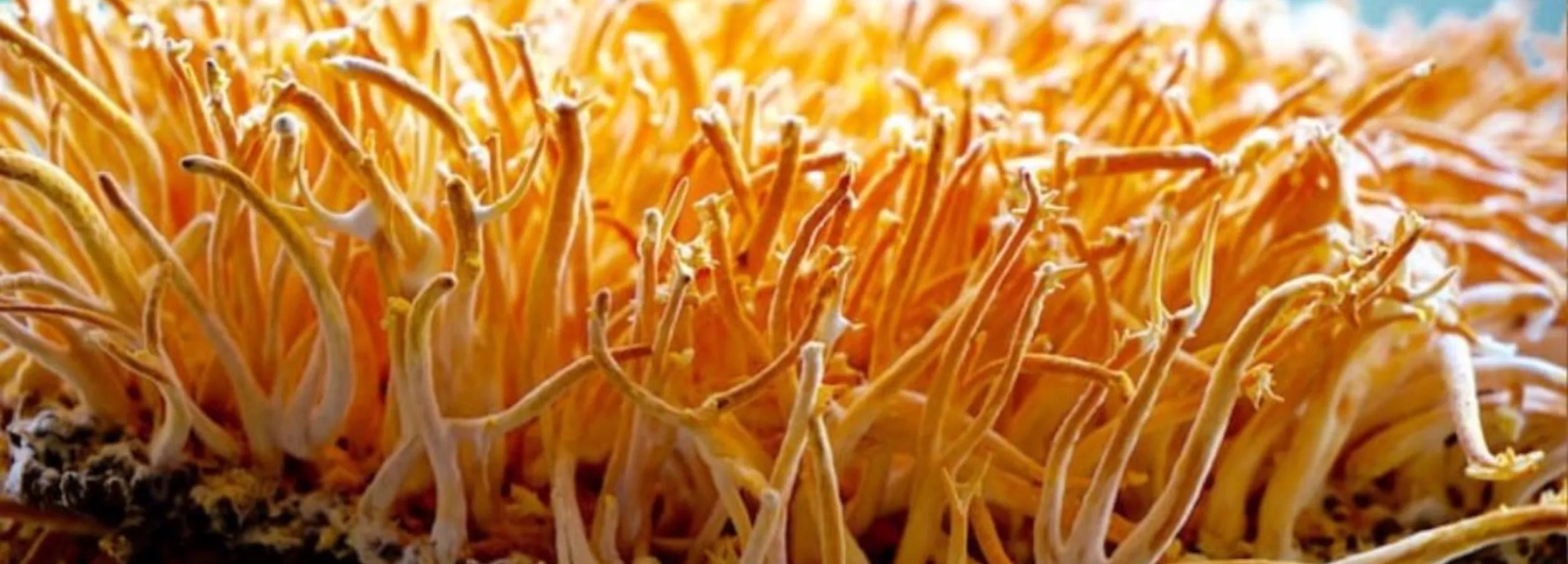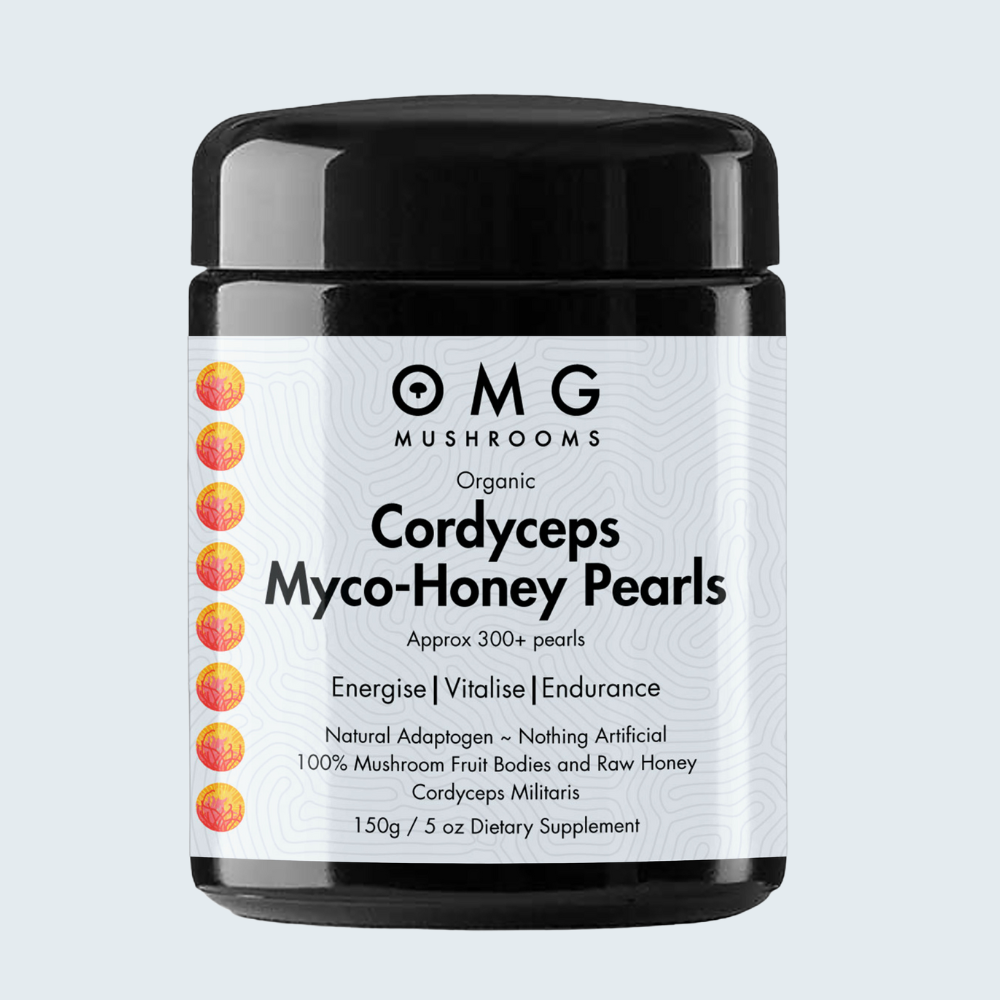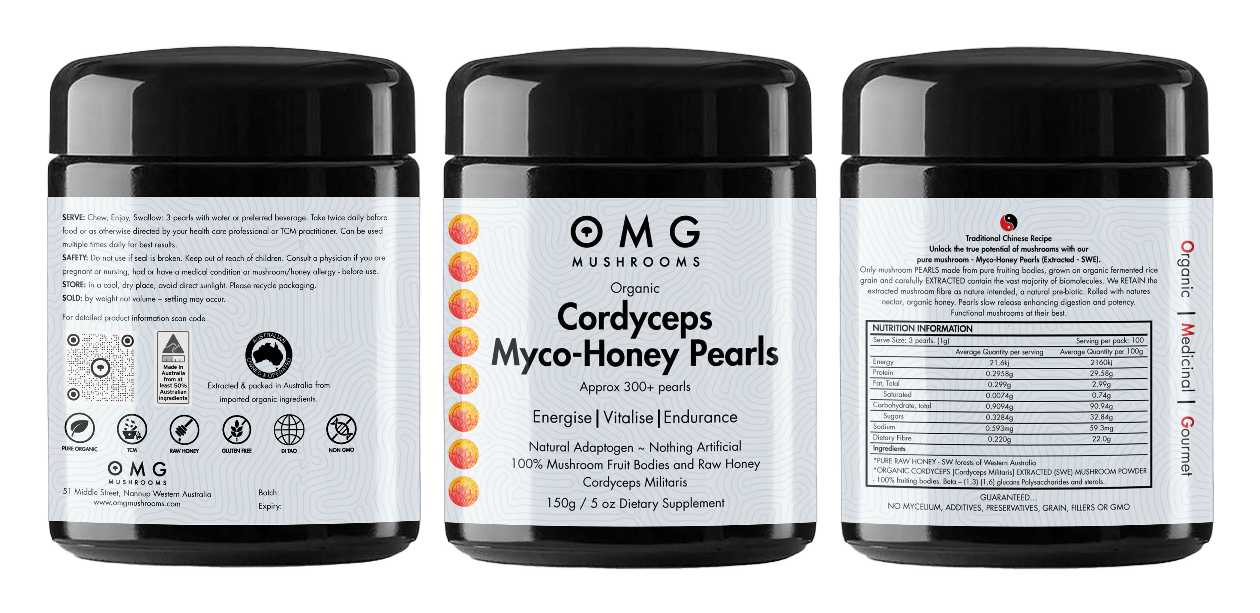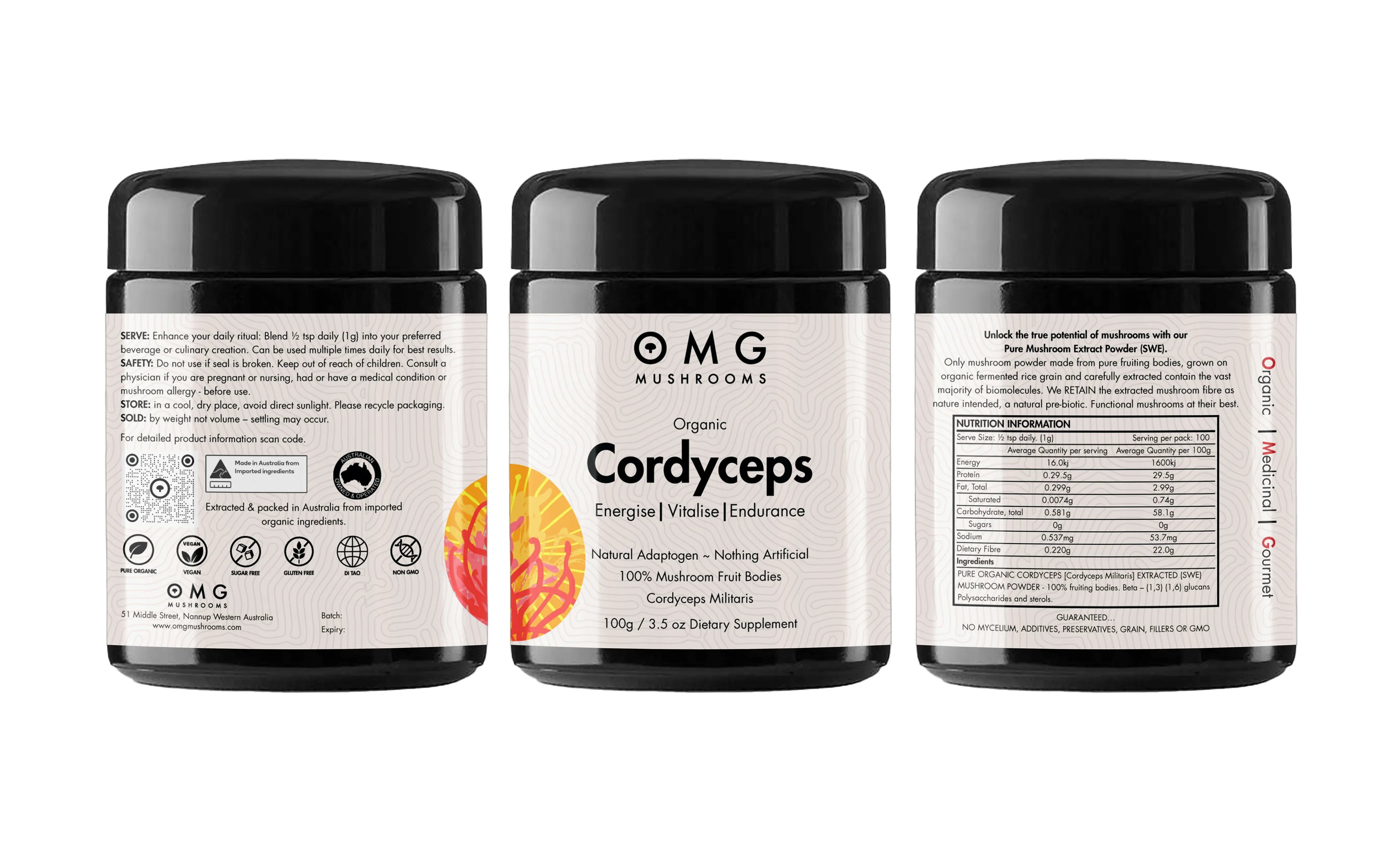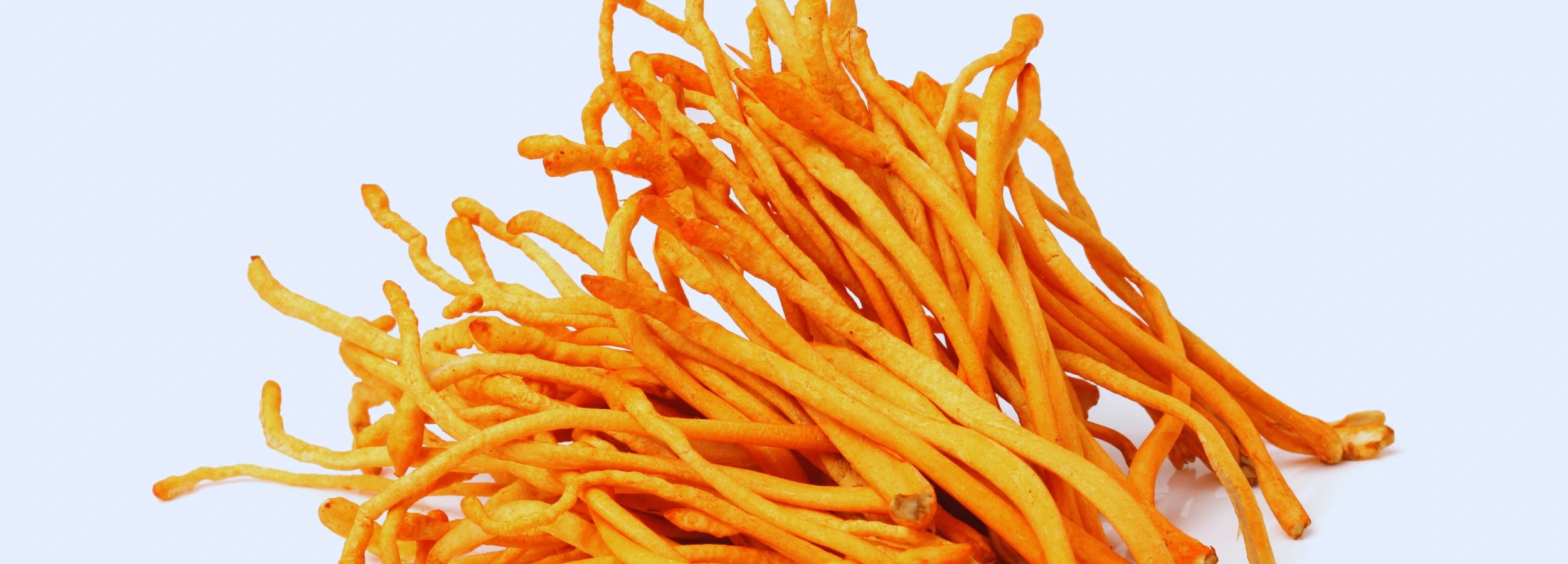Cordyceps – The Emperor’s Mushroom
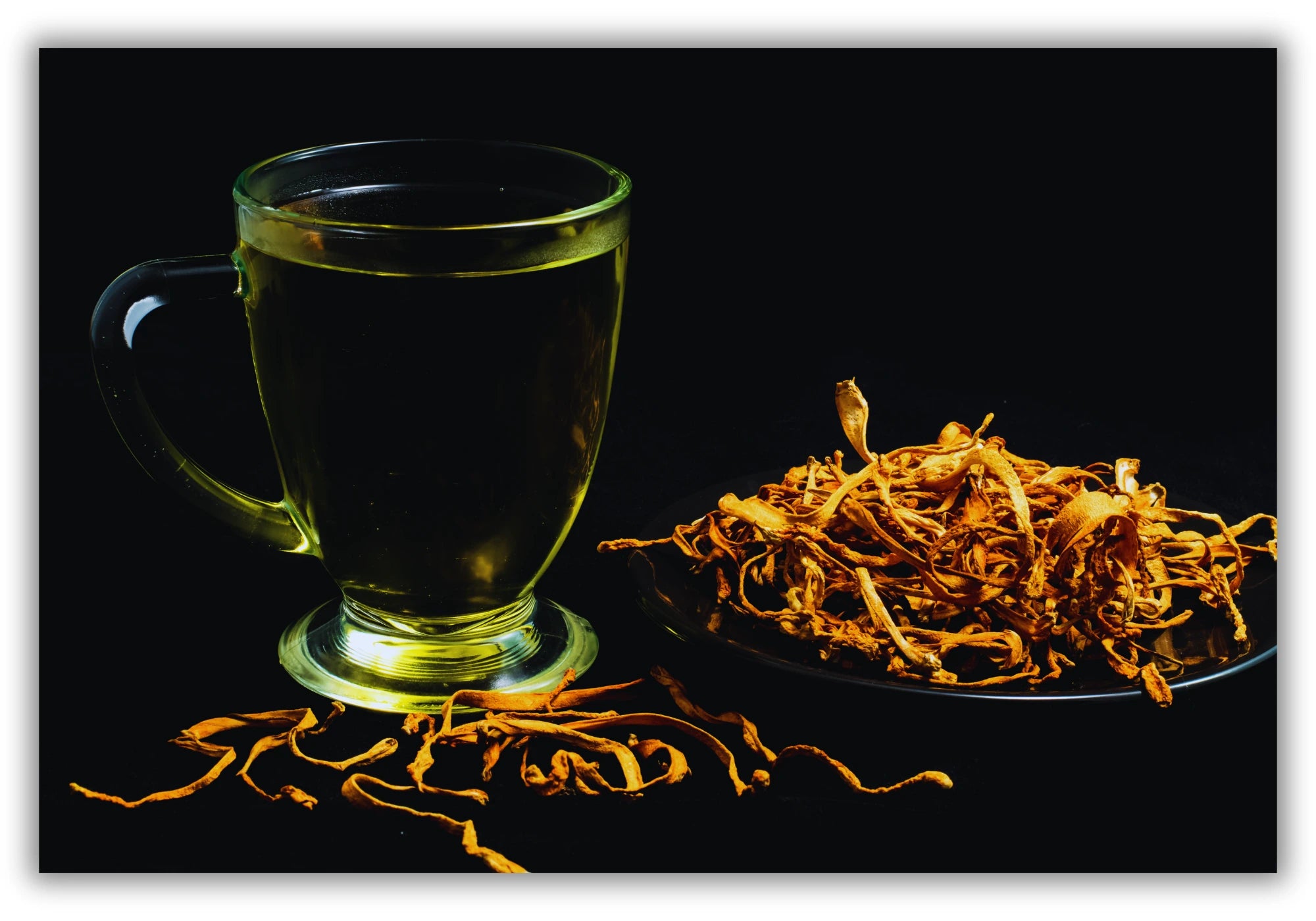
SCARLETT CATERPILLAR CLUB
Cordyceps, the remarkable medicinal mushrooms, possess powerful biochemical properties and boast a fascinating ecology. Revered for centuries in traditional medicine, they are renowned for enhancing overall well-being and longevity. Additionally, these mushrooms are recognised for their energising effects, improving athletic performance, respiratory functions, and libido even with just a single dose.
The ecology of cordyceps adds to its allure, with a unique strategy of parasitising insects and modifying their behaviors. While numerous cordyceps species exist in the wild, the two primary types used in medicine are Ophiocordyceps sinensis, known as the “Chinese Caterpillar Fungus,” and Cordyceps militaris, referred to as the “Scarlet Caterpillar Club.”
Cordyceps is celebrated for its invigorating, aphrodisiac, and hormone-regulating properties. It has demonstrated benefits in alleviating fatigue, depression, infertility, menstrual disorders, and libido disturbances. Scientific studies have also affirmed its role as an antiviral and anti-tumoral agent. Notably, Cordyceps stands out for its high cordycepin content, the main active biomolecule, renowned for its diverse therapeutic properties.
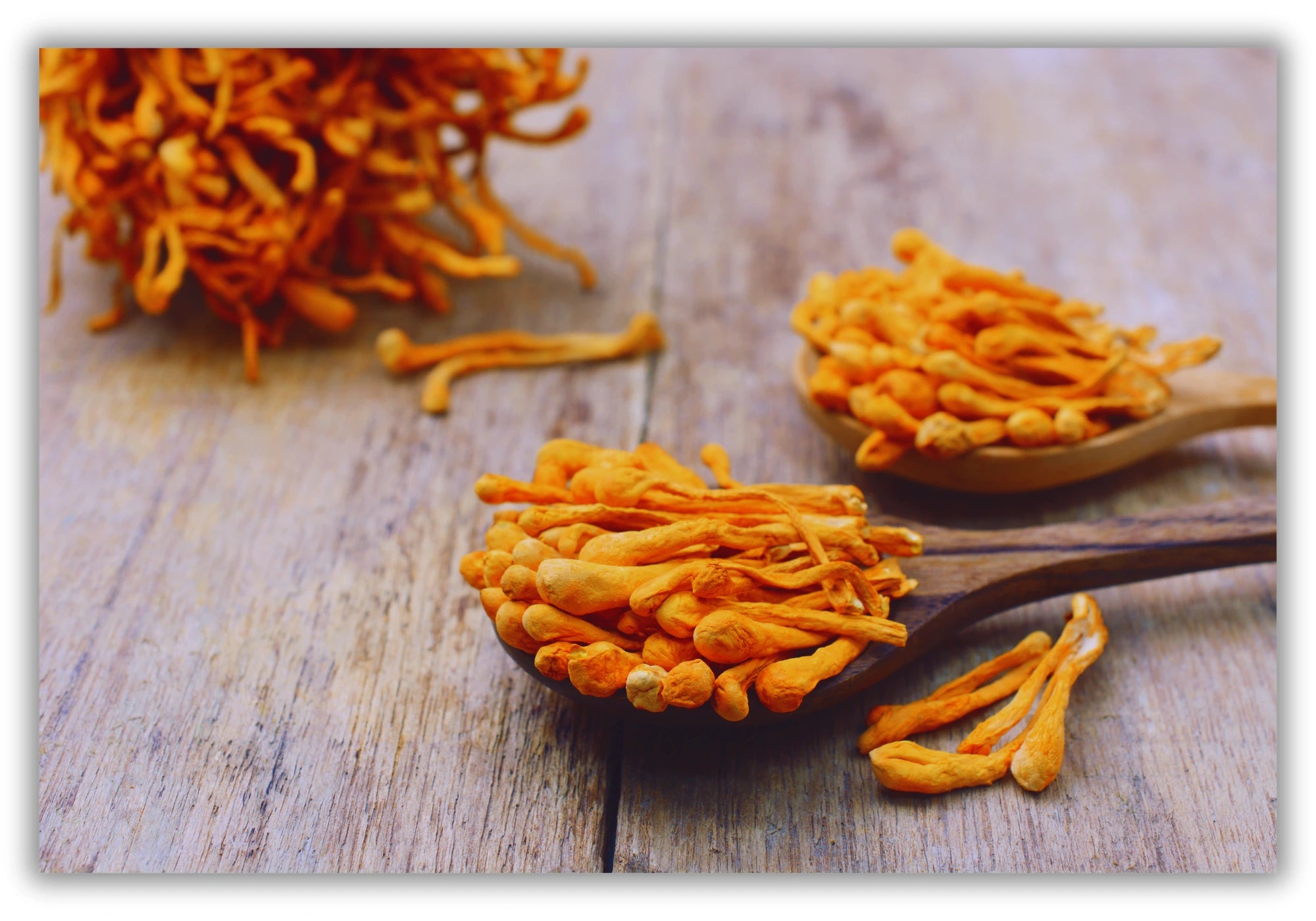
UNDERSTANDING THE POWER OF CORDYCEPS
Boosting Immunity: Cordyceps enhances the immune system by increasing leukocytes and interleukins.
Antiviral Properties: Research suggests Cordyceps inhibits transcriptase activity, showing potential benefits, particularly observed in HIV studies.
Immunoregulation: In conditions like systemic lupus erythematosus, Cordyceps improves Th1/Th2 balance, showcasing immunoregulatory benefits comparable to cyclosporine.
Antioxidant Boost: Cordyceps polysaccharides exhibit potent antifree radical activity, elevating SOD (superoxide dismutase) and glutathione peroxidase levels.
Cardiovascular and Respiratory Support: Cordyceps combats fatigue, stimulates haematopoiesis, aiding erythrocyte and platelet production, and improves respiratory function, benefiting those with conditions like asthma, chronic bronchitis, and COPD (chronic obstructive pulmonary disease).
Metabolic Well-Being: Cordyceps exhibits probable MAO (monoamine oxidase) inhibitor effects, proving useful in cases of anxiety, nausea, or dizziness of nervous origin. Its collective actions, coupled with aphrodisiac effects, contribute to a "rejuvenating" effect by enhancing homeostasis and acting as an adaptogen. Additionally, evidence supports Cordyceps' efficacy in improving symptoms of autoimmune hepatitis and reducing fibrotic tissue resulting from liver cirrhosis.
Renal and Urogenital Health: Cordyceps demonstrates reduced proteinuria, improved creatinine clearance, and tubular cell regeneration, showcasing potential benefits for kidney health.
Reproductive and Sexual Wellness: Cordyceps acts as a hormonal regulator and fertility enhancer, increasing levels of sex hormones like oestradiol and testosterone. It also induces an increase in plasma cortisol and testosterone levels, contributing to enhanced sexual activity and overall well-being.
CORDYCEPS
PRODUCTS WITH REISHI
FUN FACT
Cordyceps sinensis gained widespread attention in 1993 when Chinese track and field athletes, attributed to C. sinensis supplementation, broke several world records. This claim has since been supported by numerous studies, solidifying its reputation for boosting athletic performance.
MYCOLOGICAL NOTES
Cordyceps sinensis, intimately linked with the caterpillar, finds its exclusive habitat in the highlands of the Himalayas, thriving at altitudes between 3000 and 5000 meters. Spanning Tibet, Bhutan, China, and Nepal, this wild-collected Cordyceps holds a distinguished position in traditional Chinese medicine, cherished for its effectiveness and sustained popularity. On the other hand, Cordyceps militaris, known as The Scarlet Caterpillar Club, takes a different path. This species is cultivated and harvested in commercial operations worldwide, presenting a commercially accessible alternative to its wild counterpart.
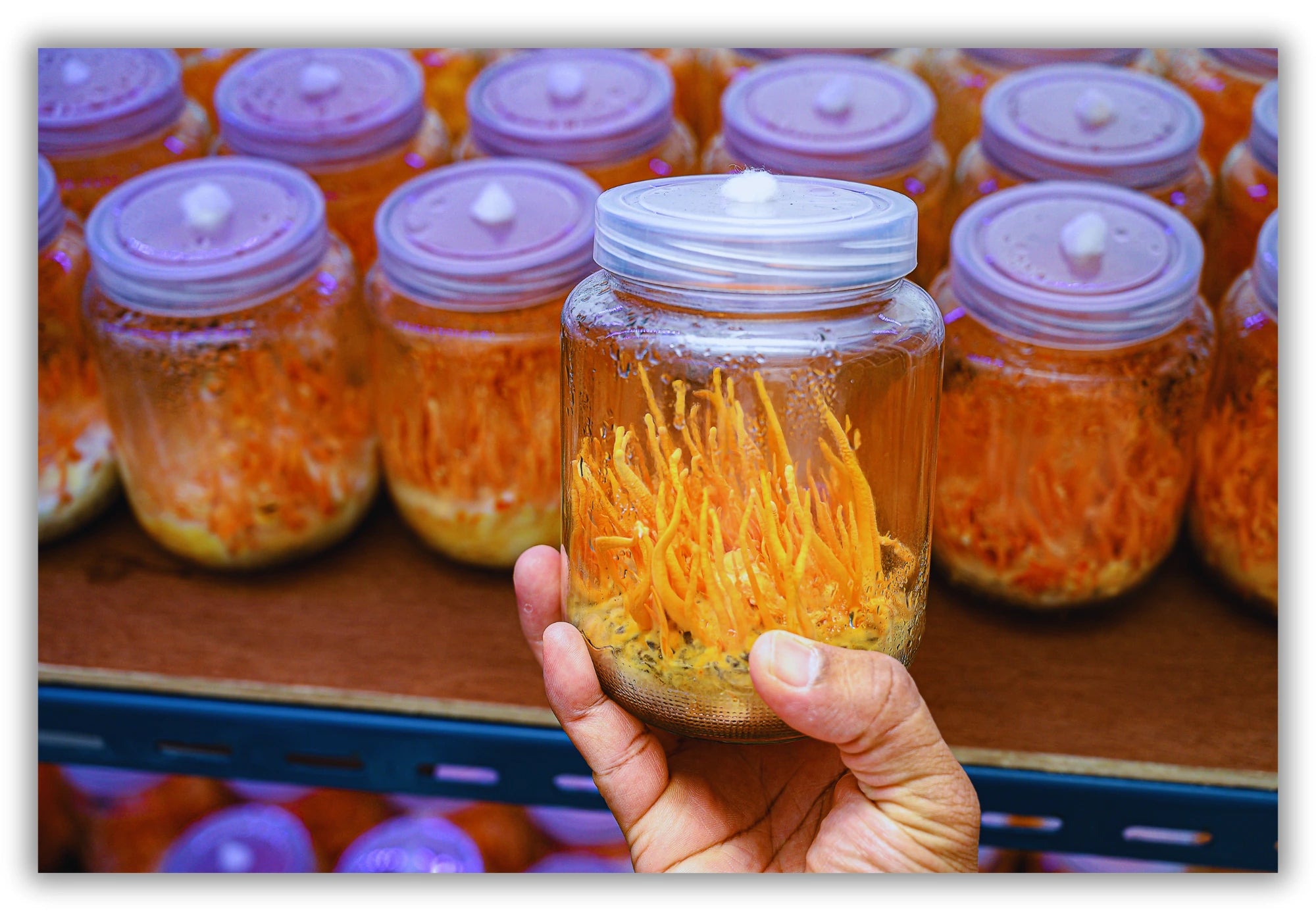
CORDYCEPS CULTIVATION
Cordyceps militaris, follows a distinct cultivation process that differs from its wild counterpart, Cordyceps sinensis. Cultivated in controlled environments, Cordyceps militaris is typically grown on a substrate of organic rice or other nutrient-rich mediums. The cultivation process involves mimicking the natural conditions that support its growth, such as temperature, humidity, and light. This controlled cultivation allows for the production of high-quality Cordyceps militaris with consistent active biomolecule content, making it a reliable and sustainable source for various applications, including traditional medicine and functional foods. The cultivation notes for Cordyceps militaris underscore the importance of maintaining optimal conditions to ensure the development of a potent and reliable product.
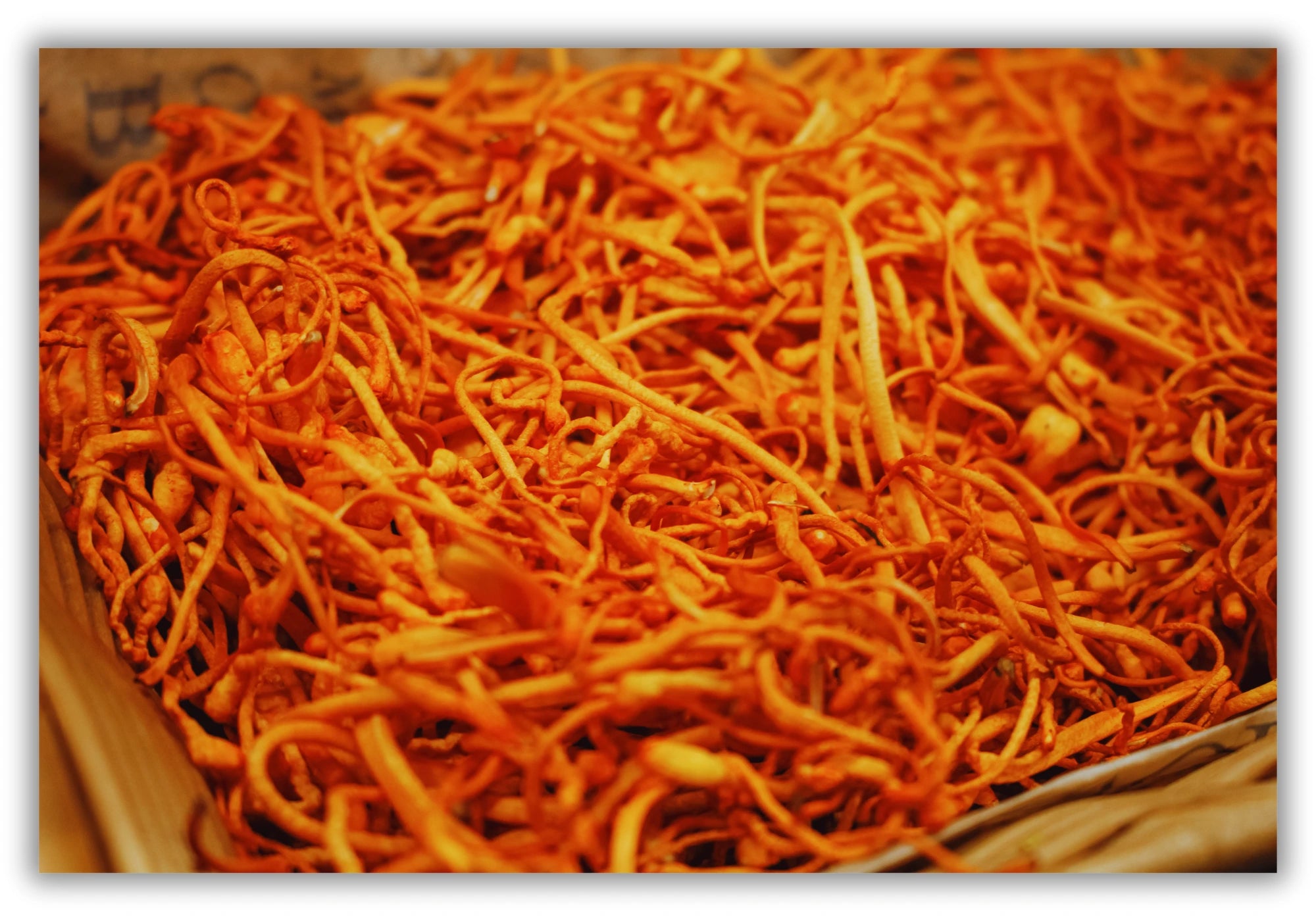
DON'T YOU THINK THEY LOOK LIKE TWISTIES?
Discovering the therapeutic potential of Cordyceps militaris offers a holistic approach to well-being, supporting various bodily systems and promoting overall health.

